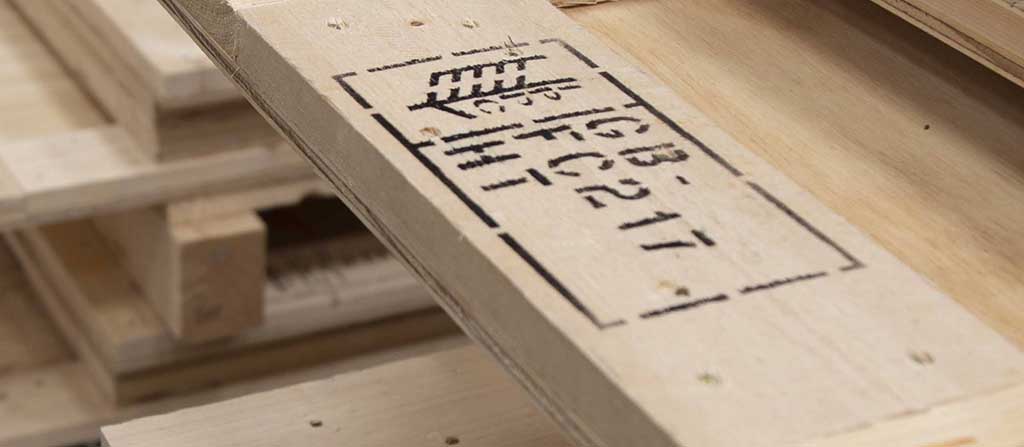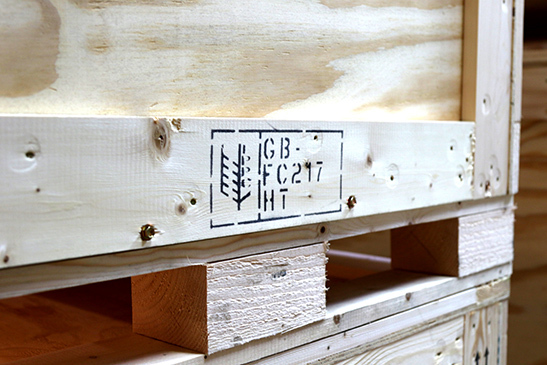What is ISPM 15? And Who Does it Apply To?
The International Standards for Phytosanitary Measures Publication No. 15 are commonly known as ISPM 15. They provide criteria for the regulation of...
We're actively recruiting for a range of roles across sales, engineering, IT and warehouse. Check our careers page to see open positions including apprenticeships.

Whether you’re moving a single piece of equipment or an entire production line, our trusted team of engineers can support every step of your move, from rigging to end-to-end relocation support across the globe.

ISPM 15 are the standards which provide criteria for regulating wood as a packaging material.
International Standards for Phytosanitary Measures Publication No. 15 – to give the regulations their full title – help to combat the spread of timber pests through dunnage and timber packing used in international trade.
As an international export packing provider, IES has decades of experience in packing cargo. We always recommend using a professional export packing service. However, if you do need to make alterations to your cargo independently, you’ll want to avoid non-compliance with ISPM 15 regulations.
In this article, we offer you the benefit of our export packing expertise. Before you walk the ‘compliance tightrope’, consider these Do’s and Don’ts of ISPM 15:
DO stamp treated wood with the ‘HT’ stamp. This is essential to mark out wood packaging material that is in an acceptable condition to be used for packing in international trade.
DON’T pack anything with old wood into an HT crate. You might think you are ISPM 15 compliant after your crate and bracing is ready, but by packing additional wood inside you are running the risk of jeopardising your compliance, especially if the wood is old.
DO add the specific stamp of the company you appoint for export packing to all wood which is added to block or brace a crate. It is irrelevant whether it came from the originator (i.e. the company which conducted the export packing) or not.
DON’T stamp wood packaging material with ‘HT’ unless you are 100 per cent sure that it has been heat treated.
DO remember that dunnage – that is, any low-cost wood or waste material which uses elements of wood used to augment the securing of a cargo – comes under ISPM 15, too. That means any dunnage you are using must have been heat treated whether it is new, repaired or remanufactured wood.
DON’T use repaired or remanufactured wood packaging material without making sure it has been retreated. This includes the removal of all previous ISPM 15 marks before marking the material again.
DO mark wood packaging material on two opposite surfaces, and ensure that the marks are fully visible when the packaging material is in use.
DON’T use orange or red for marking unless your cargo is considered hazardous or dangerous.
DO your paperwork. Every volume of different size wood that makes up a crate has to be accounted for and each different size of timber must have a certificate.
DON’T rely on unaccredited export packing services. Professional export packing services such as IES operate under the Wood Packaging Material Marking Programme and can guarantee ISPM 15 is complied with along the supply chain – from the sawmill to the wood supplier and on to the export packing service itself.
Ensure you comply with ISPM 15 regulations and avoid potentially costly situations such as your cargo being turned back or receiving a heavy fine.
A professional export packing service can also help you with administration. Documents and records that may be required to demonstrate ISPM 15 compliance include; kiln chamber charts that document temperature and time requirements have been met, and monthly delivery records for HT lumber.
The key takeaway here is to consider the benefits of using a crate manufacture and export packing specialist such as IES, while also being vigilant when independently placing any kind of wood material into your crates.
Efficient export packing allowed Pirate Studios to grow their business in Europe. Read about our speedy Export Packing service for the British studio network.
Stay up to date with the latest news and resources from our experts.

The International Standards for Phytosanitary Measures Publication No. 15 are commonly known as ISPM 15. They provide criteria for the regulation of...

ISPM15 standards provide the criteria for wood used as packaging material. They are intended to prevent the spread of pests and diseases and concern...
Factory de-installations are never simple. But they’re a lot easier when you do them right.